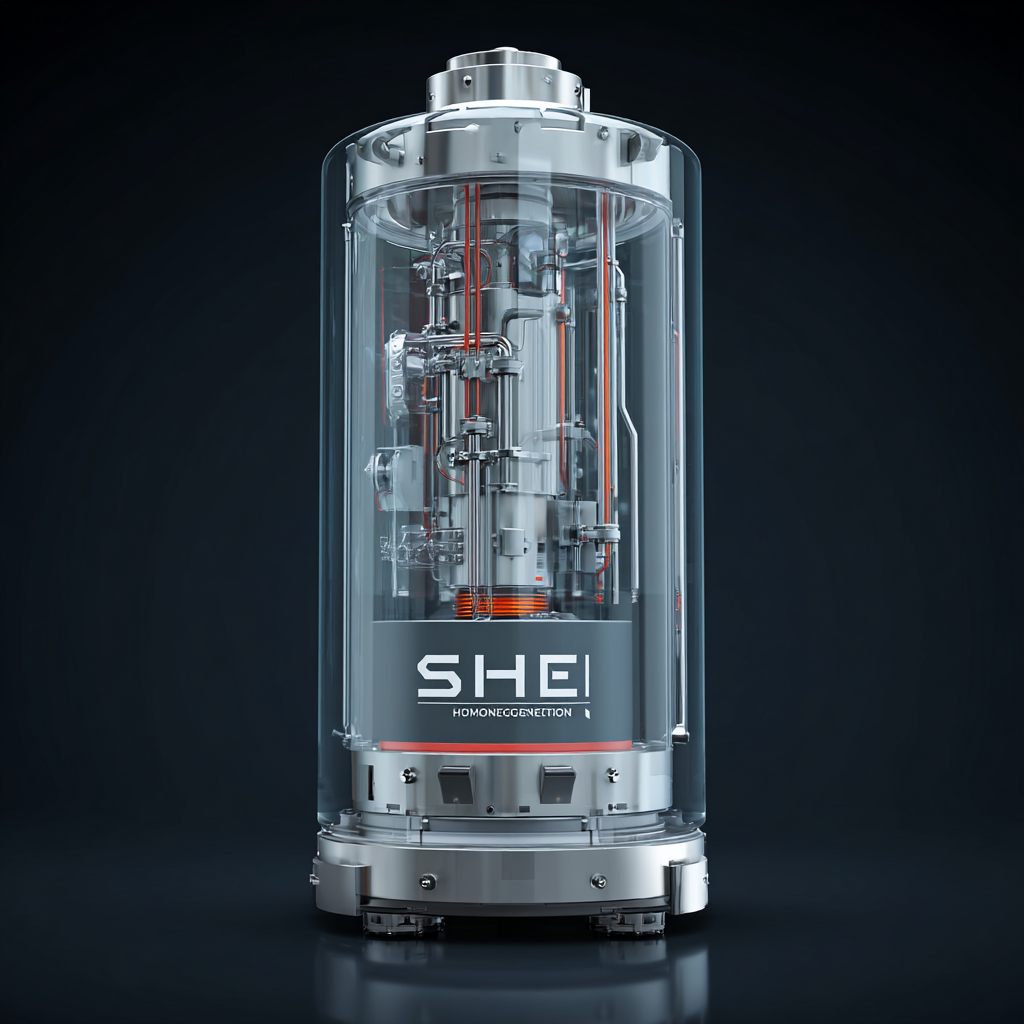
The advent of High Shear Homogenizer technologies marks a transformative era across various industries, from food processing to pharmaceuticals. As per a recent market analysis, the global homogenizers market is projected to reach $2.5 billion by 2025, driven by the increasing demand for consistent product quality and the need for enhanced emulsification processes. High Shear Homogenizers are at the forefront of this evolution, offering unparalleled efficiency in particle size reduction and uniformity, crucial for industries striving for innovation and competitiveness. With advancements in technology, such as the integration of smart automation and upgraded blade designs, these homogenizers are not only streamlining production but also reducing operational costs. This blog will explore the future of High Shear Homogenizer technologies, highlighting their pivotal role in solving current challenges and reshaping industry standards.

The landscape of high shear homogenizer technologies is rapidly evolving as we approach 2025. Emerging trends indicate an increasing focus on energy efficiency and sustainability, with manufacturers striving to minimize their environmental footprint. Advanced designs are setting the stage for devices that not only consume less energy but also require fewer resources during the production process. These innovations are poised to make high shear homogenizers more accessible to industries keen on adopting greener practices, from pharmaceuticals to food and beverage.
In addition to sustainability, there's a notable trend toward automation and digital integration. Smart homogenizers equipped with IoT capabilities are becoming standard, allowing real-time monitoring and data analytics. This shift enables operators to optimize processes, reduce downtime, and enhance product consistency. As industries demand higher precision and control, the future of high shear homogenizer technologies is likely to see a surge in automated solutions that enhance productivity while ensuring impeccable quality across various applications.
The evolution of high shear homogenizer technologies is significantly transforming various industrial applications, driven by key innovations that enhance efficiency and productivity. One of the most prominent advancements is the integration of smart automation and real-time monitoring systems. These innovations allow for precise control over the homogenization process, enabling manufacturers to achieve consistent product quality while reducing energy consumption and minimizing waste.
Another critical innovation lies in the development of advanced materials and designs for homogenizer components. High-performance rotor-stator configurations and wear-resistant materials result in improved durability and operational efficiency. These innovations not only extend the lifespan of homogenizers but also enhance their ability to handle a wider range of viscosities and batch sizes, adapting to the unique needs of various industries such as food processing, pharmaceuticals, and cosmetics. As these technologies continue to evolve, they pave the way for more sustainable and efficient production methods across the board.

High shear homogenizers have become essential tools in enhancing the quality and consistency of various products across multiple industries. Recent advancements in processing technologies, particularly high-pressure homogenization (HPH), have demonstrated a significant improvement in the quality and safety of products like fruit juices. A study highlighted that microfluidization, a form of HPH, enables eco-friendly processing while effectively preserving the nutritional integrity of juices, contributing to longer shelf life and enhanced consumer satisfaction. With a focus on quality, nanoparticle engineering combined with high shear homogenization is paving the way for more consistent and reliable medicine formulations, crucial in the pharmaceutical industry.
In the realm of plant-based products, research emphasizes the importance of homogenization in improving the quality of soy milk and other plant-based beverages. A thorough particle size analysis reveals that optimal homogenization can lead to superior texture and mouthfeel, which is vital for consumer acceptance. Furthermore, innovative applications of high shear mixers are being explored in diverse formulations, such as yogurt enriched with brewers' spent grain, which enhances nutritional profiles by improving consistency and rheological properties. This integration of high shear homogenization technologies not only boosts product quality but also addresses sustainability concerns, charting a transformative path for future industry practices.
| Application Area | Key Benefits | Technology Type | Typical Capacity (L/h) | Energy Efficiency |
|---|---|---|---|---|
| Food & Beverage | Improved texture and taste consistency | Batch Processing | 2000-5000 | High |
| Pharmaceuticals | Enhanced bioavailability | Inline Processing | 500-2000 | Medium |
| Cosmetics | Uniform product texture | Lab-Scale Homogenizers | 100-500 | Very High |
| Chemical Processing | Reduced particle size for better reactions | High-Pressure Homogenizers | 1000-3000 | Medium |
The landscape of homogenization processes is undergoing a significant transformation, largely driven by advancements in automation technology. Automation is not just enhancing efficiency; it is revolutionizing how industries approach homogenization, minimizing human intervention while maximizing output consistency. Automated high shear homogenizers now incorporate sophisticated control systems and real-time monitoring, enabling precise adjustments to parameters such as speed and pressure. This level of control ensures that products maintain their desired texture, viscosity, and stability, which is crucial in sectors like food processing, pharmaceuticals, and cosmetic manufacturing.
Furthermore, the integration of automation in homogenization reduces the risk of contamination and variability caused by manual handling, fostering a more reliable production environment. By utilizing automated systems, industries can achieve higher throughput while minimizing waste and downtime. The data collected during the homogenization process can also provide insights for continuous improvement, allowing companies to refine their formulations and processes based on empirical evidence. As the trend toward automation continues to gain momentum, it is clear that the future of homogenization will be defined by efficiency, precision, and enhanced product quality.
The following chart illustrates the projected adoption rates of automation in high shear homogenizer technologies across various industries over the next five years. Automation is expected to significantly transform homogenization processes, enhancing efficiency and consistency.
The landscape of high shear homogenizer technologies is evolving, particularly with a keen focus on sustainability. As industries grapple with environmental concerns, manufacturers are innovating to make their homogenization processes more eco-friendly. According to a recent report from Allied Market Research, the global market for high shear homogenizers is projected to reach $2.45 billion by 2027, highlighting the growing demand for efficient and sustainable production methods. This growth is driven by the need for better resource management and reduced waste in food processing, pharmaceuticals, and cosmetics.

In terms of sustainability, modern high shear homogenizers are being designed with energy efficiency in mind. Companies are increasingly incorporating advanced technologies such as variable speed drives and energy-recapturing systems that significantly lower energy consumption. Data from Research and Markets indicates that energy-efficient equipment can reduce operational costs by up to 30%, making it not only an environmentally friendly choice but also a financially viable one. Additionally, the use of biodegradable materials in equipment design is gaining traction, reflecting a broader commitment to sustainable practices across the manufacturing sector. As these innovations continue to evolve, they will play a crucial role in reshaping not just the homogenizer market but also the industries reliant on them.
